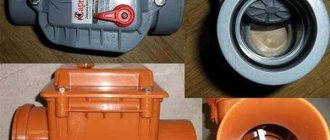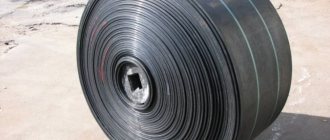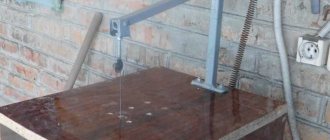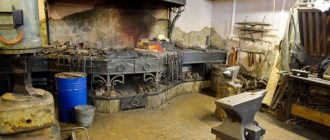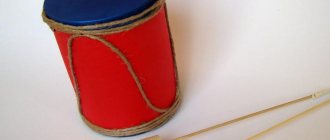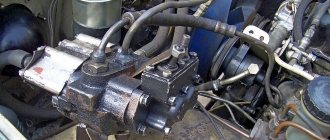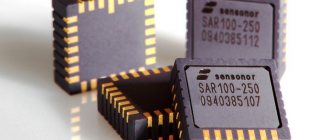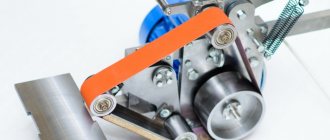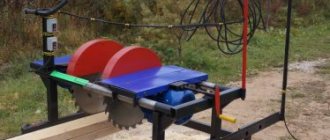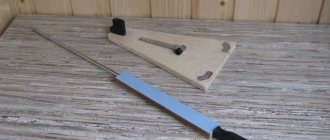Today, interior designers can offer a large number of different options for decorating residential premises. Relatively recently, the popularity of using such a method of painting as airbrushing on walls has been increasing, although this method has been known since time immemorial.
Airbrushing has been gaining popularity lately.
This is one of the techniques for making decorative elements in the form of pictures on various surfaces using an airbrush, a special tool that sprays dye under the action of compressed air, creating the desired image.
Airbrushing on the wall looks very nice
Prices for airbrushing walls
The cost starts from 2500 rubles per sq.m., and can reach up to 4000. This is the price of applying the simplest drawings. More complex options for airbrushing on walls will cost more - from 5,000 rubles per sq.m.
Why such a range? This is because the price depends on several factors:
- level of complexity of the picture;
- performance technique;
- the quality of the surface on which the drawing will be applied;
- workload;
- order fulfillment time;
- type of paints used (water-based, acrylic, oil);
- location of the customer's facility.
The cost of work may depend on several factors
Advantages of airbrushing in the interior of an apartment
Painting rooms in an apartment can be done in a variety of ways. Each of them has its pros and cons.
List of advantages that airbrushing has on the walls of an apartment
- Possibility of applying an image to any surface (wall or ceiling, plaster, wallpaper, drywall, etc.).
- Photorealistic quality of the finished work.
- Quite economical consumption of material compared to other painting methods.
- Painting walls with an airbrush allows you to paint hard-to-reach areas that cannot be painted with a brush.
- By spraying the dye in a thin layer, it is possible to create amazing smooth transitions of colors and shades.
Wall painting can be done in several ways
What paints should you use?
To decorate walls with airbrush painting, use:
- water-based acrylic paints, which are easy to mix, are absolutely harmless to health. You can use Tikkurila or Dulux construction acrylic paint, with a selection of pigments. Artistic acrylic is significantly more expensive and takes longer to cover wall area;
- specialized paints for airbrush Exmix, Createx or Molotow.
Additionally, to protect it from moisture and touch, the finished painting is coated with matte varnish.
Important: During airbrush work, you must use a respirator to protect your lungs from getting the paint mixture.
It is not recommended to use nitro enamel or oil paints indoors, which have a strong specific odor and require special solvents for cleaning the airbrush and additional protective equipment for the artist.
DIY airbrush
Due to the high cost of painting by professionals, some decide to do this type of decor with their own hands. If you have the necessary skills, it can be done independently. To apply a picture or abstraction to a surface, you will have to be patient, since the work is quite painstaking and requires accuracy.
You can create airbrush yourself
Additional recommendations
Once you figure out how the tool works, you can decorate various surfaces beautifully. The following recommendations will make using an airbrush easier for beginners:
As you can see, airbrushing is not very complicated, but it allows you to create amazing paintings. Professionals who have been working with such a tool for many years can create 3D images. But a beginner who has recently mastered the principle of airbrush painting will also be able to decorate a facade, fence, car and other surfaces without any problems.
Airbrush setup and care tips (2 videos)
How and what you can draw on (23 photos)
Materials and tools used
If you decide to decorate the room yourself, you will need:
– an airbrush (“air brush”), or better yet two, so that you can use a spare one if the first one gets clogged; – a special compressor with a pressure of 2 atmospheres; – accessories (replacement hoses, nozzles, stands); – paints (it is best to use acrylic or water-based paints on walls, since they do not have a strong odor); – masking tape; – whatman paper for creating a stencil; – stationery (sharp scissors, knives, erasers, a set of brushes, compasses, magnifying glass, ruler); – protective mask or respirator; – protective facade varnish, preferably matte.
You will need an airbrush to work.
Decoration technique
Before you start painting, you need to prepare the surface. Usually for this purpose it is coated with putty, then primed. To avoid contamination, nearby walls and objects are covered with film, which is secured with masking tape.
If you do not have skills or experience in drawing, prepare a cardboard stencil in advance. After this, they move on to creating the background.
Before applying the drawing you need to prepare the surface
Applying the background to the picture
First, by mixing paints, the desired shade is selected. After that, pour the mixture into the airbrush, then test the operation of the unit on paper. Then they begin to cover the wall with a paint composition of the chosen shade.
The background can be applied either evenly or by making a smooth transition from a light shade to a dark one or vice versa.
Before applying the drawing you need to make a background
Best lists
In addition to the models presented above, we have created another TOP airbrushes that differ from each other in their special characteristics. This rating includes:
- For beginners.
- Price-quality ratio.
- Multifunctional.
Let's take a closer look at the range of models presented.
Jas 1113 – for beginners
The best device for getting the desired result in the shortest possible time. The mixing type is internal, so you get a perfect job right after the first application. The coating application is quite soft, and the device itself has a very ergonomic design that does not interfere with the production of art. The nozzle is 3mm. Ideal for the initial stages of work.
Price tag: from 1312 to 1700 rubles.
airbrush Jas 1113
1178 JAS – price-quality ratio
The device is equipped with an aluminum coating. The Air Control unit ideally helps to adjust the air supply in the airbrush itself and the width of the drawing line. With this technology, you can completely control the process and the subtlety of the work. The set includes 3 replaceable paint containers (2, 5 and 13 ml), and the nozzle diameter is 0.3 mm. Ideal value for money.
Cost: from 1213 to 1500 rubles.
airbrush 1178 JAS
Jas 1122 – multifunctional
A pistol-type airbrush with a very wide range of works. Mounting on the side allows you to paint at any angle of inclination of the device itself and install the container on both the left and right. The kit is equipped with two paint containers (7 ml and 10 ml). The device also has a maximum paint supply limiter. Nozzle size – about.3 mm.
Price: from 2250 to 3000 rubles.
airbrush Jas 1122
Applying the main drawing
After the background of the image has completely dried, with or without a stencil, you can apply the main elements. To get a neat picture, apply the stencil to the wall, then spray paint. If the drawing is arbitrary, you can do without using it. Then, using an airbrush, smaller elements are added.
If the decor being performed is not monochromatic, then before using a different color, the airbrush is thoroughly washed.
The drawing should be applied only after the previous layer has completely dried
Where to find employees
A natural question arises: where to find an artist, and if he is found, why will he agree to work with you? You can find a specialist through an advertisement, via the Internet, or by visiting a city art school and asking them for a recommendation of their former students. In general, this is not a problem. The second follows from this. If a person responded to your ad, it means he needs a job, and then, do you think that artists earn a lot? Walk along the streets of Moscow or St. Petersburg - there are dozens of them sitting on the streets, fighting for every client. And so it is almost everywhere. So they will only be happy with your offer to earn money.
Shutdown
The final stage is coating the image with special compounds that protect it from fading, changing the original color and shape of the applied decor.
So, the airbrushing on the wall is done. After completing application, you must immediately rinse the used tools.
After applying the design, it is worth covering it with a protective layer.
Drawing - decorative elements
Depending on the purpose of a particular room, a picture is selected and applied to the surface using an airbrush.
For example, in a children's room, images of favorite fairy tale and cartoon characters can be used. You can independently come up with a magical world that will surround your child.
Landscapes are more suitable for the hallway of the room
The peculiarity of the bathroom is that airbrushing can even be applied to plumbing fixtures. This solution is original and unusual. In this room, drawings of a sandy beach, sea coast, etc. would be appropriate. Here you can use three-dimensional, 3D images that visually enlarge the space, since most often this room in the apartment is quite small.
Drawings with superheroes are suitable for children's rooms.
In the bedroom, hall, and also in the living room, you can apply almost any decorative elements in accordance with the overall style of the interior, it all depends on the personal preferences of the owners. However, in the relaxation room it is better to use calmer, softer, muted shades that will promote relaxation and good rest.
Any pattern is suitable for the living room and bedroom. The main thing is that it fits into the existing interior
Airbrushing on the walls is the best option for creating a unique and attractive room interior. For it to last for a long time, you need to select the right materials for the job.
Airbrush Selection Guide
Fundamentally, the operation of a pneumatic sprayer (airbrush) is as follows: an air flow under pressure higher than atmospheric, passing through a narrow hole, forms a jet, and due to the fact that the air moves at high speed, a rarefaction region appears in the near-jet zone - a low vacuum. If a material (for example, a relatively low-viscosity liquid or a dry fine powder) is introduced into this area, called the mixing area, in one way or another, the latter will begin to spray, forming an aerosol.
CLASSIFICATIONS OF AEROGRAPHS
An aerosol (air-material mixture) in the form of a conical torch moves in the direction of the surface to be painted and settles on it, forming a coating. At the same time, the quality of atomization (the degree of grinding of the material in the air flow), and as a result, the quality of the final coating, depends on three factors:
- from the correct choice and degree of preparedness of the material
- from operating mode
- on the quality of the airbrush sprayer
By type of air flow
through an airbrush, airbrushes are distinguished:
- flow-through
- lockable
Through flow-through airbrushes, the air flow constantly comes out and its quantity is not regulated. Through lockable airbrushes, the air flow comes out only when the trigger (control button) is turned on and its amount is regulated. The type of air flow through the airbrush significantly affects the choice of air or gas source.
According to the type of mixing of air and paint flows
airbrushes are distinguished:
- internal mixing
(Internal Mix), in which the mixing area of the two flows is located inside the spray head housing. The design of the spray unit for such airbrushes has a movable needle. - external mixing
(External M1x), in which the mixing area is located outside the housing. The design of the spray unit in such airbrushes is needleless or has a fixed needle.
The advantages of external mixing airbrushes are: their simplicity of design, reliability (if they are made of high-quality materials), and, as a result, low cost. However, fine work cannot be done with airbrushes with this type of mixing. Medium and large sized jobs are the area of application for these tools.
Airbrushes with internal mixing can also perform delicate work, however, their design is complex, they are less reliable and require very careful handling.
By type and method of controlling the airbrush
directly in the course of work, airbrushes are distinguished:
- single action (air control)
(Air Single Action), in which you can only change the amount of air supplied to the spray. The airbrush is controlled by moving the trigger (control button) only “down” (air supply) - single action (material control)
(Fluid Single Action), in which you can only change the amount of material supplied for spraying. The airbrush is controlled by moving the trigger in the “down” direction only (material feed). - double independent action (control)
(Independent Double Action) in which, directly during operation, you can independently change both the amount of air and the amount of material supplied for spraying. The airbrush is controlled by moving the trigger in two directions - “down” (air supply) and “back” (material supply). Operating this type of airbrush is not easy. It requires skill, but such tools have more possibilities. - double dependent action (control)
(Controlled Double Action), in which, directly during operation, you can only dependently change both the amount of air and the amount of material supplied for spraying. Those. the more air supplied for spraying, the correspondingly greater the supply of material. The airbrush is controlled by moving the trigger in only one direction - “backwards” (switching on: with a slight advance - air supply, and then - material supply; off: with a slight advance - material supply, and then - air supply).
Let us mention that the airbrush is controlled during operation and should not be confused with the preliminary settings (settings) of the tool. In addition, controlling an airbrush using a trigger (button) involves changing the amount of air or material, or both, supplied to the mixing area, not pressure.
According to the type of eyeliner of the colorful material
and the location of the paint container, airbrushes are distinguished:
- with bottom supply of material
(Siphon-Feed) With such airbrushes, the supply of material is carried out only due to the vacuum forces that arise in the area of mixing the two flows. - with top material feed
(Gravity-Feed). With such airbrushes, the material is supplied both due to the forces of vacuum and due to the weight of the material, i.e. - with a little “pressure”. - with material supply under pressure
(Pressure-Feed). Using airbrushes with such eyeliner, you can spray materials with high viscosity.
The placement of the material should not be confused with the location of the paint container. On some airbrush models, the paint container is installed on the side, however, the type of material supply can be one of three, and sometimes combined. The type of material supply can significantly affect the viscosity of the sprayed materials.
According to the type of material nozzle landing
In the airbrush body, airbrushes are distinguished:
- with a threaded, fixed
nozzle fit (Screw-in Nozzle System) - with conical, fixed
self-centering nozzle fit (Conic Nozzle System self-centering) - with a combined, fixed
, self-centering nozzle fit (Combination Nozzle System self-centering) - with floating, self-centering
nozzle landing (Floating Nozzle Systemselfcentering)
The method of seating the material nozzle affects the complexity of service work. So, when planting a nozzle according to type (a), it is necessary to remove and install the material nozzle into the airbrush body with extreme caution, since the slightest misalignment or overtightening of the nozzle leads to breakage of this thin part, and part of the nozzle remains in the airbrush body, which is very difficult to remove. difficult and sometimes impossible. As a result, an expensive instrument fails irrevocably. For this reason, it is not recommended to use additional spray kits on airbrushes with threaded nozzles. Airbrushes with nozzle fittings of types (b), (c) and (d) are free from this drawback and therefore, when using additional spray kits, it is possible to obtain a two-in-one, three-in-one, etc. airbrush. The spray kit includes three parts: a needle (Needle), a material nozzle (Nozzle), and an air nozzle.
According to the location and type of connection of the paint container, airbrushes are distinguished: with a non-removable paint container, with a cavity for material in the upper part of the airbrush body, location - top with a removable paint container, location - top, bottom, side; connection - threaded or conical friction.
Based on the availability of preset mechanisms
airbrushes are distinguished:
- with a material feed limitation mechanism
(Pre-set Handle Set). This mechanism, mounted on the neck, limits the movement of the needle. Some models are equipped with mechanisms with a memory function. - with a mechanism for pre-setting the material supply
(Line Adjustment Assembly) This mechanism, built into the airbrush body, pulls the trigger in the “backward” direction through a screw/nut transmission, thereby pre-setting the material supply. Operating an airbrush with such a pre-installation is extremely simple, but such a mechanism is installed on sprayers only with bottom supply of material. - with a mechanism for pre-setting the air supply
This mechanism is an additional air valve - a microthrottle, which can either be built into the airbrush body or installed (as an option) in front of the airbrush air valve.
Preliminary settings greatly facilitate the control of the airbrush, especially if two mechanisms (b) and (c) are installed.
HOW TO CHOOSE AN AIR BRUSH FOR YOURSELF
If you are a beginner, you do not need to buy a very expensive airbrush model, because in the process of acquiring skills, due to lack of experience, you run a high risk of damaging some parts (for example, the needle or nozzle) of the airbrush. Of course, damaged parts can be purchased, but for expensive models these parts are very expensive.
On the other hand, if you are determined to engage in airbrushing, choosing a very cheap model is also inadvisable, since you will “grow out of it” quite quickly and will have to buy another model, etc. However, two, three or more tools are always better than one.
The second, and maybe the first, thing to take into account is what source of air or gas will you use?
Without it, your airbrush is a shiny metallic fun. Those. choosing an airbrush is at the same time choosing an air source - a compressor, and the latter is the most expensive purchase. When choosing a compressor, its most important characteristic, among other things, is performance, i.e. the amount (volume) of air supplied to the outlet pipe per unit of time. This value is usually expressed in the following units: liter per minute (L/min), cubic meter per hour (m3/h), cubic feet per minute (CPM).
What kind of work are you going to do?
If you are going to do delicate work, you need to remember the following: the minimum size of the ink spot or the minimum thickness of the line is determined by two factors:
- diameter of the material (ink) nozzle
- distance from the airbrush to the surface to be painted
In addition, for fine work, an airbrush model with internal mixing of paint and air flow is required. In other words, in order to perform the most delicate work, you need an airbrush with the minimum possible diameter of the material nozzle. If you are going to paint medium and relatively large surfaces, the diameter of the nozzle must be increased and, in addition, for this purpose you can use an external mixing airbrush, the design of which is simpler and, as a result, cheaper.
| Operations | IWATA | HARDER&STEENBACK | HANSA (slot machines) | PAASCHE |
| Auto retouching | HP – BE1 | N, FP -1\31” | ||
| Autographics | NR – S, NR-VS | Colani, Evolution | 481SET, 681SET | VLS – SET, MIL |
| Body art | HP – CS | Evolution | VL, MIL | |
| Ceramics | HP-CS | Colani, Evolution | 481, 681 | H,VL |
| Nail art | HP-B | Grafo T1 | 281 | V.J.R. |
| Abrasive processing | A.E.C., L.A.C. | |||
| Graphic arts | HP-SBS, HP-B | Evolution, Grafo | VL, MIL, VSR, VJR, AB | |
| Hobby | R4500, HP-BS | Focus, Evolution | 381, 581 | VL, MIL, H |
| Taxidermy | HP – CS, R4500 | Colani | 481, 681 | VL, MIL, H |
| Photo retouching | AB | |||
| Modeling | HP – BS, R4500 | Focus, Evolution | 581, 281 | H |
| Fabric painting | Colani | 481 | VLS, H | |
| Interior, facade | Colani | VLS, H |

